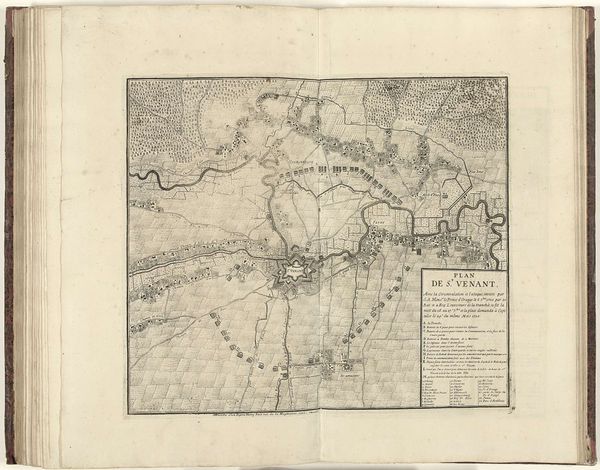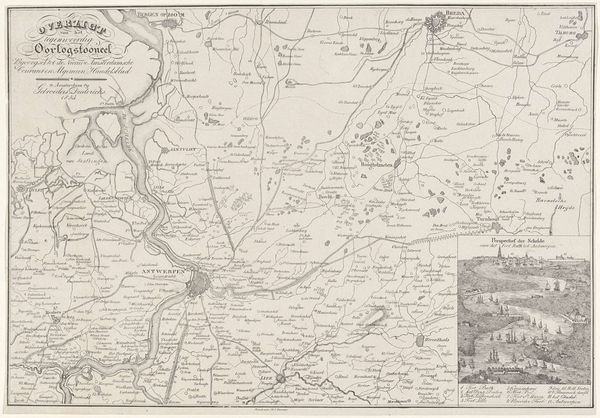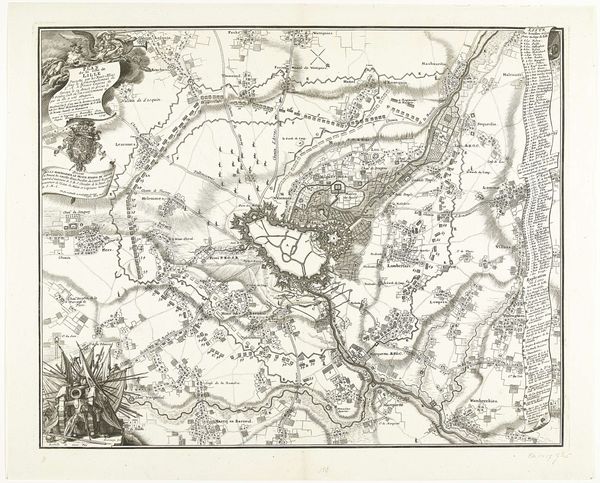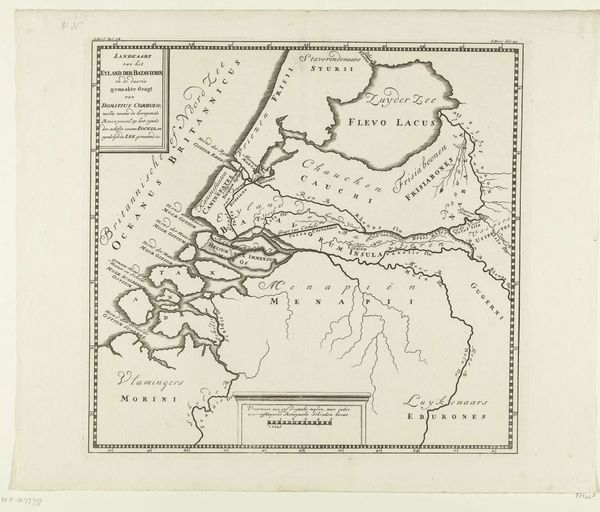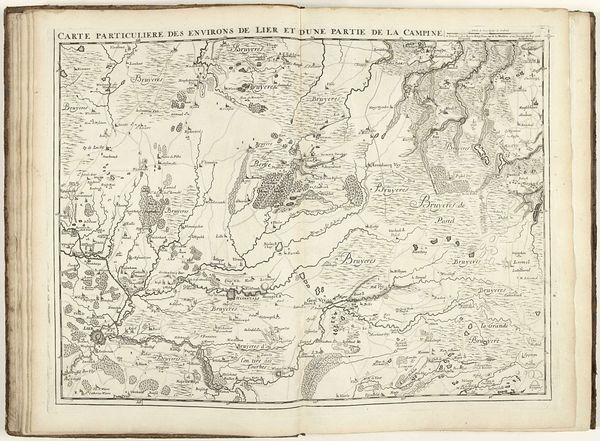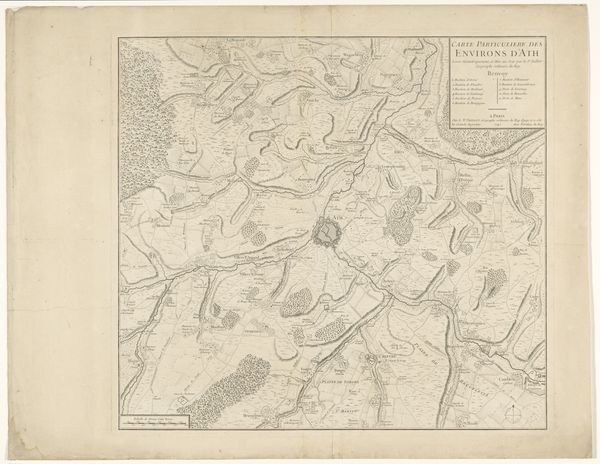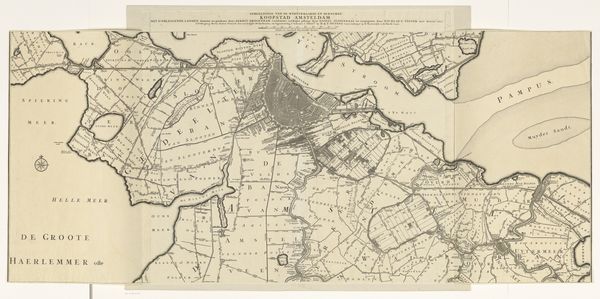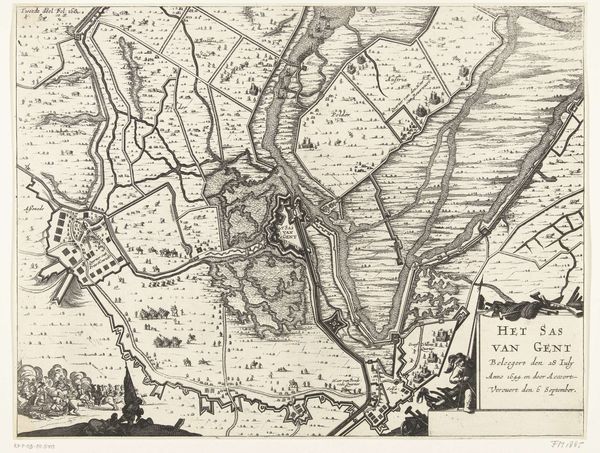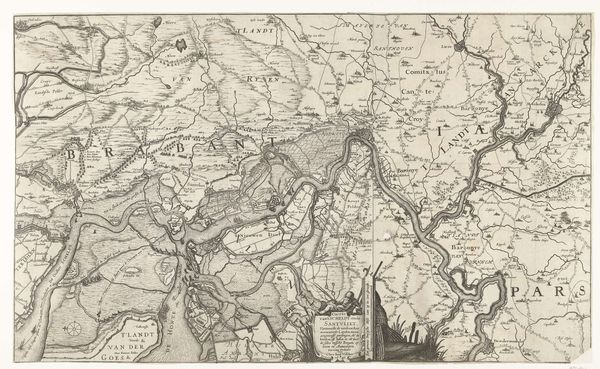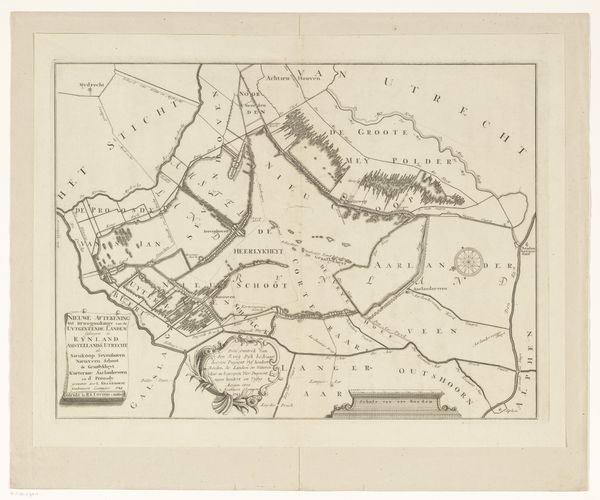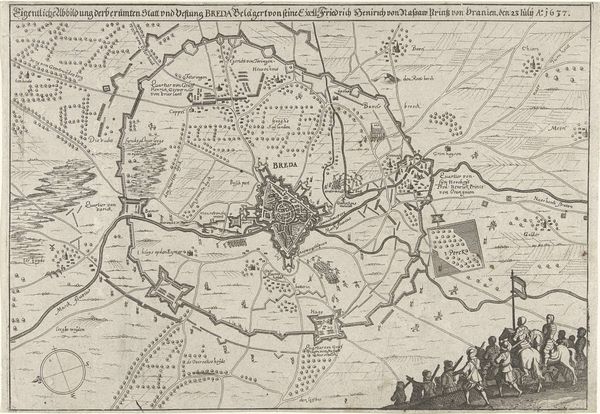
drawing, print, etching, ink
#
drawing
#
baroque
# print
#
etching
#
landscape
#
ink
#
cityscape
Dimensions: height 384 mm, width 484 mm
Copyright: Rijks Museum: Open Domain
Editor: We’re looking at "Beleg van 's-Hertogenbosch, 1629," an etching and ink drawing made sometime between 1649 and 1699. The rendering of space is quite compelling, almost diagrammatic. How would you analyze its composition? Curator: Indeed. If we consider this work through a Formalist lens, we can immediately see that the relationship between line, form, and space operates according to a rigorous structural logic. The etching’s effectiveness relies on a calculated arrangement of shapes and voids. Notice how the fortified city is contained by both natural and constructed elements? Editor: I see the rigid lines of the walls and the more organic shapes representing the landscape… Curator: Precisely. The contrast creates a visual tension. What's more, consider how the use of hatching and cross-hatching builds tonal depth, suggesting three-dimensionality. Do you observe a hierarchy within these compositional elements? Editor: Well, the city at the center certainly draws my eye first with its densely packed lines. Curator: Yes, the strategic emphasis on the city through its complex textures creates a focal point. Everything revolves around it, geometrically and visually. One can almost hear the clash of form. Editor: It’s amazing how much information and, dare I say, drama, is communicated through these artistic techniques alone! Thanks for the insightful perspective. Curator: It’s these close observations that allow us a fuller experience with art. Understanding art as art allows us to see beyond representation.
Comments
No comments
Be the first to comment and join the conversation on the ultimate creative platform.

